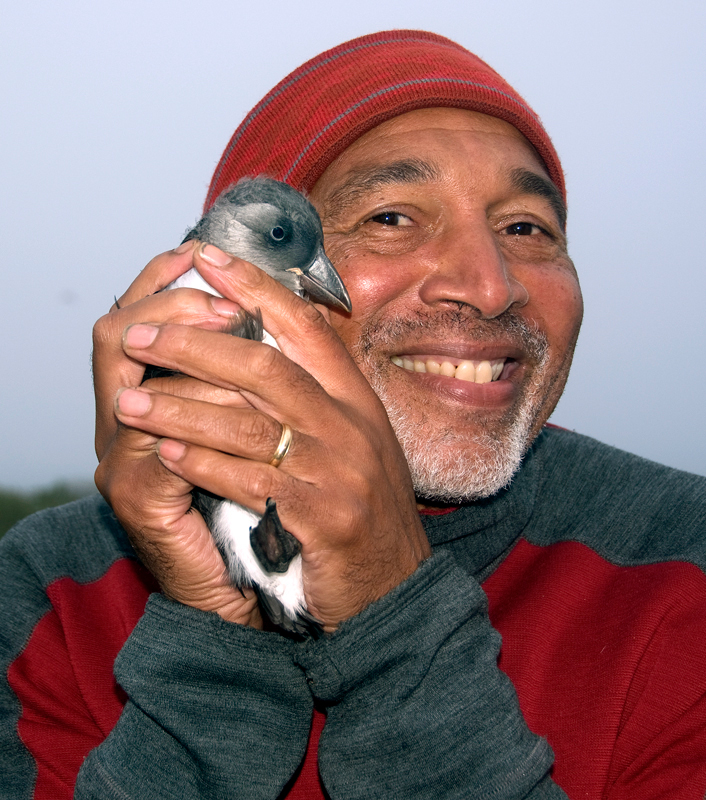In Illumination’s animated movie “Migration,” which hits movies screens Friday, a mallard duck family flying from New England to Jamaica stops in New York. The freaked-out father of the ducks exclaims, “Whoa! We are not flying through this crazy death trap of a city!” A pigeon offers to guide the mallards, saying, “Just stay close to me and everything will be alright.” The pigeon proceeds to be hit by a bus and a scooter.
The pummeling of the pigeon can easily be a metaphor for real birds in the real world. We have turned much of Earth into a death trap for our fine feathered friends.
Such slapstick in the spirit of Looney Tunes is sure to fill theaters with guffaws. I hope, though, that when the laughter subsides, the scene lingers more soberly with families. The pummeling of the pigeon can easily be a metaphor for real birds in the real world. We have turned much of Earth into a death trap for our fine feathered friends, making their actual migrations more drama than comedy.
A 2019 study in the journal Science found that North America had lost nearly 30% of its birds, 2.9 billion, in the previous half century. The European Union has lost 600 million birds since 1980. A 2015 study found that global seabird populations had plummeted 70% since the 1950s, equivalent to a loss of 230 million birds. Humanity has hit them with far more than buses.
The asphalt of suburban sprawl, the slashing of forests and tilling of grasslands for agriculture, crop pesticides, house cats that roam outdoors, collisions with vehicles, building glass and powerlines, poisons and industrial operations all add up to billions of bird deaths a year. In the United States alone, such factors are such factors are estimated by the U.S. Fish and Wildfire Service to kill 3.3 billion birds a year.
According to the 2022 State of the World’s Birds, published by BirdLIfe International, 49% of the planet’s 11,000 bird species are in decline, while only 6% are increasing. Only 38% of bird species are considered stable. One in 8 bird species are listed as vulnerable, endangered or critically endangered on the Red List of the International Union for Conservation of Nature, one of the world’s top tracking websites on the health of Earth’s biodiversity.
As the co-author and photographer of two books on the restoration of Atlantic puffins to New England, I am witness to the drama. Puffins were hunted off several islands in Maine by the late 1800s for their meatand were down to their last pair by 1902. There are now more than 1,300 pairs. Until a decade ago, they flourished as “a bird of least concern” on the Red List.
Today, they are listed as vulnerable globally and endangered in Europe because of many factors, including pollution, overfishing of the prey they feed on and hotter waters associated with climate change, which often drives away the fish puffins feed chicks. Two years ago, the warmest waters on record in the Gulf of Maine triggered catastrophic nesting failure of puffins and other seabirds. They have rebounded since, but the episode forces us to ask how many more “buses” will we hit the puffins with.

On land, grassland birds, such as bobolinks and species of bunting, longspur and meadowlark are suffering the largest decline of North American birds. They’re declining because of rapid loss of their habitat to development, agriculture, and pesticides, according to the 2022 State of the Birds for the United States, published by the North American Bird Conservation Initiative. In addition, so many other kinds of birds that line the shore or dart around in forest canopies are in decline that 70 species are at a “tipping point” for having lost at least half their population since 1970.
Of course, this is not just because of habitat loss in the U.S. Every fall, more than 4 billion birds leave the U.S. for the Caribbean, Central America or South America, where they may encounter similar issues of habitat loss. One 2015 study found that only 9% of 1,451 migratory bird species enjoyed full protection of their routes.












